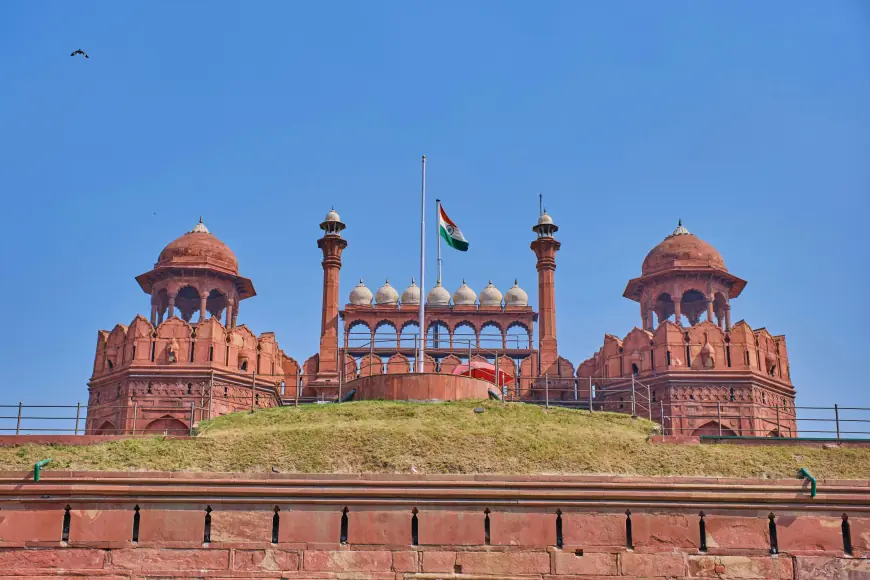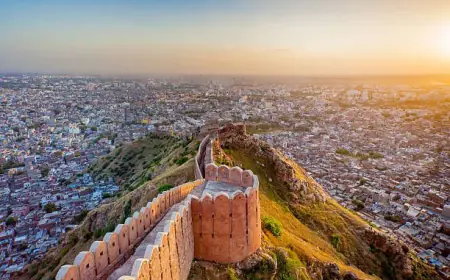Exploring Red Fort Delhi: A Journey Through Time and Legacy

Delhi is a city layered with history, and at its heart lies an architectural masterpiece that has witnessed centuries of triumph, art, and transformation: the Red Fort. Known to millions as the Indian Red Fort, this imposing monument tells the story of the mighty Mughal dynasty, colonial upheaval, and India’s fight for freedom.
From the first moment you glimpse its towering red sandstone walls, you know you are standing before something extraordinary. Let’s explore what makes this UNESCO World Heritage site one of India’s most significant and beloved landmarks.
Who Made Red Fort and Why It Was Built
Before you enter the fort, you might wonder who made red fort and why it was built on such a grand scale. The story begins with Emperor Shah Jahan, the visionary who also commissioned the Taj Mahal. In 1638, Shah Jahan decided to move the Mughal capital from Agra to a new city he called Shahjahanabad, known today as Old Delhi.
He needed a fortress that would reflect his power and serve as the empire’s administrative center. Construction continued for nearly ten years, combining Persian, Timurid, and Indian design elements into one unforgettable structure. Historians researching who constructed red fort point out how its layout balanced both royal comfort and military defense.
Inside Lal Qila New Delhi: What Awaits You
Stepping inside lal qila new delhi feels like traveling back to the 17th century. The entrance through the Lahore Gate leads into Chatta Chowk, a covered bazaar where merchants sold silks, jewels, and exotic goods to the Mughal elite.
Beyond the market, the fort opens into expansive courtyards and graceful halls. The Diwan-i-Aam (Hall of Public Audience) was where the emperor listened to his subjects’ petitions. The Diwan-i-Khas (Hall of Private Audience), adorned with intricate inlay work, once held the magnificent Peacock Throne.
As you stroll through the gardens, you’ll notice the Rang Mahal (Palace of Colors), once the residence of royal women, and the royal baths that highlight the luxurious lifestyle of the Mughal rulers.
Red Fort Delhi India: A Symbol of Independence
Over the centuries, the Red Fort evolved beyond its role as a royal residence. When the British defeated the last Mughal emperor, Bahadur Shah Zafar, in 1857, the fort became a military stronghold and symbol of colonial dominance.
Then, on August 15, 1947, India’s first Prime Minister, Jawaharlal Nehru, raised the tricolor flag above its ramparts. From that moment, red fort delhi india became a beacon of India’s hard-won independence. Today, it hosts the country’s annual Independence Day celebrations, when the Prime Minister’s speech echoes across the walls that once heard the commands of Mughal emperors.
Red Fort Timing and Entry Details
If you’re planning to visit, it’s important to confirm red fort timing to avoid disappointment. The fort is typically open from 9:30 AM to 4:30 PM, Tuesday through Sunday. Mondays are reserved for maintenance and remain closed to the public.
One of the highlights of any visit is the evening light and sound show. Using storytelling, music, and colorful lighting, this show recounts centuries of Delhi’s history in a way that’s engaging for all ages.
Entry tickets can be purchased at the gate or online. It’s wise to check current red fort tickets before you arrive. Pricing varies for Indian citizens, foreign visitors, and children, and online reservations often save time.
Tips for Visiting the Indian Red Fort
To make your experience memorable, consider these practical tips before visiting the indian red fort:
-
Arrive early: The morning hours are cooler and less crowded.
-
Wear comfortable shoes: You’ll cover a lot of ground exploring the fort’s many chambers and courtyards.
-
Carry water: Delhi’s weather can be hot, especially from March to June.
-
Bring an ID: Sometimes identification is required for ticket purchase.
-
Allow enough time: Plan at least two to three hours to see all the main areas and museums.
Why the Red Fort Should Be On Your Bucket List
Standing before the Red Fort’s massive gates, it’s easy to feel a sense of awe. This monument has seen the rise and fall of empires, colonial conquest, and the birth of modern India. The stories etched in its walls are not just about emperors and armies—they are about resilience, creativity, and the enduring spirit of a nation.
Whether you are captivated by Mughal art, drawn to the freedom struggle, or simply eager to experience Delhi’s heritage, the Red Fort is a place where the past comes alive.
When you walk through its corridors and gardens, you aren’t just visiting a historical site—you’re stepping into India’s living history.
What's Your Reaction?
 Like
0
Like
0
 Dislike
0
Dislike
0
 Love
0
Love
0
 Funny
0
Funny
0
 Angry
0
Angry
0
 Sad
0
Sad
0
 Wow
0
Wow
0

















































